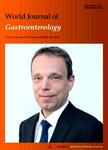Bone disorders in experimentally induced liver disease in growing rats
Bone disorders in experimentally induced liver disease in growing rats作者机构:1st Department of Internal Medicine Department of Diagnostic Radiology and Oncotherapy Department of Polymer Engineering and Textile Technology
出 版 物:《World Journal of Gastroenterology》 (世界胃肠病学杂志(英文版))
年 卷 期:2005年第11卷第45期
页 面:7169-7173页
核心收录:
学科分类:1002[医学-临床医学] 100201[医学-内科学(含:心血管病、血液病、呼吸系病、消化系病、内分泌与代谢病、肾病、风湿病、传染病)] 10[医学]
基 金:Supported by The Medical Research Council of Hungary ETT 226/2003 232/2003The Hungarian Scientific Research Fund OTKA T038067 T038154
主 题:Bone disorder Bone mineral content Mechanical resistance Experimental liver cirrhosis Growingrat
摘 要:AIM: To investigate the change of bone parameters in a new model of experimentally induced liver cirrhosis and hepatocellular carcinoma (HCC) in growing rats. METHODS: Fischer-344 rats (n = 55) were used. Carbon tetrachloride (CCh), phenobarbital (PB), and a single diethylnitrosamine (DEN) injection were used. Animals were killed at wk 8 and 16. Bone mineral content, femoral length, cortical index (quotient of cortical thickness and whole diameter) and ultimate bending load (Fmax) of the femora were determined. The results in animals treated with DEN+PB+CCh (DPC, n = 21) were com- pared to those in untreated animals (UNT, n = 14) and in control group treated only with DEN+PB (DP, n = 20). RESULTS: Fatty liver and cirrhosis developed in each DPC-treated rat at wk 8 and HCC was presented at wk 16. No skeletal changes were found in this group at wk 8, but each parameter was lower (P〈0.05 for each) at wk 16 in comparison to the control group. Neither fatty liver nor cirrhosis was observed in DP-treated animals at any time point. Femoral length and Fmax values were higher (P〈0.05 for both) in DP-treated animals at wk 8 compared to the UNT controls. However, no difference was found at wk 16. CONCLUSION: Experimental liver cirrhosis and HCC are accompanied with inhibited skeletal growth, reduced bone mass, and decreased mechanical resistance in growing rats. Our results are in concordance withthe data of other studies using different animal models. A novel finding is the transiently accelerated skeletal growth and bone strength after a 8-wk long phenobarbital treatment following diethylnitrosamine injection.



